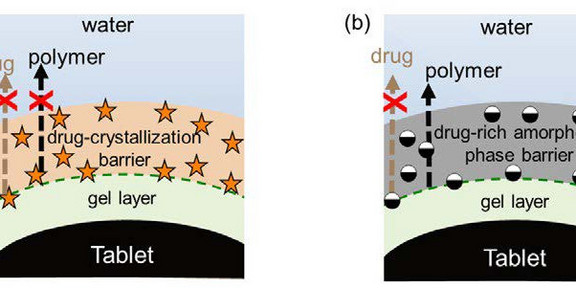Modeling the impact of tablet surface layers on the dissolution rate in water
- Research Highlights

This study utilized thermodynamic modeling to understand the behavior of amorphous solid dispersion (ASD) tablets
during dissolution when exposed to water. It emphasizes the importance of the interfacial surface layers formed during
dissolution and predicts drug load (DL)-dependent loss of release (LoR) that often prevents the complete dissolution
of the tablet in water. The reasons for this are crystallization and/or liquid-liquid phase separation (LLPS) at the tablet
surface. To this end, the phase behavior and glass transition of tablets composed of the drugs naproxen or venetoclax
and of poly(vinylpyrrolidone-co-vinyl acetate) (PVPVA64) in contact with water were predicted using the Perturbed-Chain
Statistical Associating Fluid Theory (PC-SAFT) and the Gordon-Taylor equation. The modeling results were found to be in
perfect agreement with (non)dissolution experiments.

